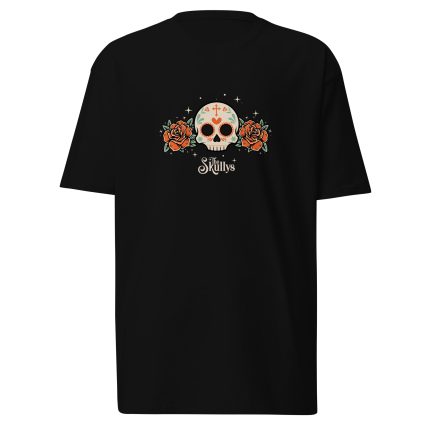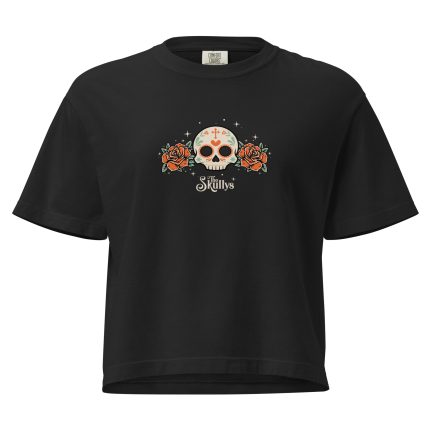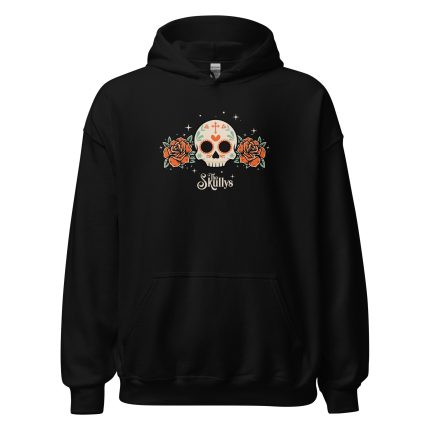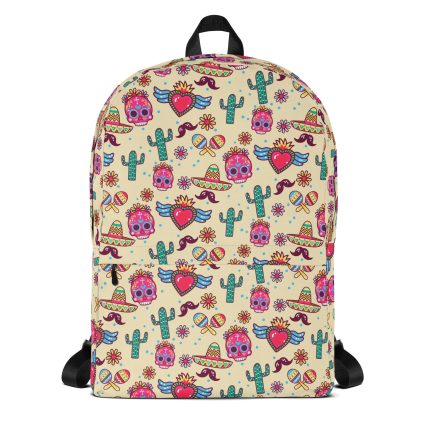Día de los Muertos (Day of the Dead) is celebrated to honor and remember loved ones who have passed away, bridging the divide between the living and the dead. It’s a time to celebrate their lives and welcome their spirits back for a visit. This two-day holiday, observed on November 1st and 2nd, is rooted in both indigenous Mexican traditions and Catholic customs, and is a joyous and colorful celebration rather than a somber one.
At Skullys, we believe every life leaves a story worth telling. That’s why Día de los Muertos hits home. It’s not just a holiday—it’s a reminder to celebrate life, even in death. With deep roots, powerful symbolism, and traditions full of soul, this is a celebration that turns mourning into meaning.
Where It All Began
Día de los Muertos has been around long before Halloween or harvest festivals. It started with the Aztecs and other pre-Hispanic cultures in Mexico, who honored the dead as part of life’s natural rhythm. They believed spirits came back each year to visit, laugh, and feast with the living.
When the Spanish arrived in the 1500s, Catholic holidays like All Saints’ Day and All Souls’ Day got layered into the mix. The result? A powerful fusion that created the modern-day Día de los Muertos, celebrated every November 1st and 2nd.
Why It Matters
This isn’t about sadness—it’s about connection. Families use the holiday to honor loved ones who’ve passed and welcome them back for a brief, beautiful reunion. It’s a time to tell their stories, cook their favorite meals, and say, “We still remember you.”
In a world that often fears death, Día de los Muertos flips the script. It’s not an ending—it’s a continuation.
The Traditions That Keep Spirits Alive
🔥 Ofrendas (Altars)
Every celebration starts with an ofrenda—an altar built at home or in cemeteries. It’s covered in:
-
Photos of the departed
-
Bright marigolds to guide their way
-
Candles, incense, water, and personal mementos
-
And yes, plenty of food and drink they loved in life
It’s not decoration. It’s invitation.
🍞 Pan de Muerto (Bread of the Dead)
Sweet, soft, and shaped like bones—Pan de Muerto is more than a snack. It’s symbolic. Families bake it, eat it, and leave it on the altar to nourish visiting spirits. It reminds us: life is fleeting, so savor it.
💀 Sugar Skulls (Calaveras)
Bold, colorful, unapologetic—just like life should be. Sugar skulls represent the joy of remembering. Often personalized with names, they show that death doesn’t erase identity. It highlights it.
Where the Magic Happens
While Mexico is the heartbeat of Día de los Muertos, its spirit lives wherever people remember their dead with love. In cities like Pátzcuaro, candlelit boats cross the lake at night. In the U.S., altars rise in homes, galleries, and street festivals from LA to San Antonio.
Wherever it’s celebrated, the message stays the same: Remember them. Celebrate them. Live for them.
Tell Your Story, Keep Theirs Alive
At Skullys, we’re inspired by traditions that turn life into legend. Día de los Muertos isn’t just a ritual—it’s a reminder to live with heart and honor what matters.
Live boldly, love fully, make memories, tell stories.
Got someone you never want to forget? Start your own ofrenda. Bake the bread. Wear the skull. Light the candle. Share their story.
🖤 Ready to celebrate life the Skullys way? Browse our Día de los Muertos collection and keep the memory alive.




